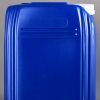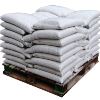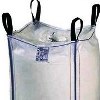| Anmol Chemicals is the pioneer manufacturers of Potassium Stearate, Pharmaceutical Excipients Food & Flavor chemicals in India. We offer Halal and Kosher Potassium Stearate made in an ISO9001, ISO22000 (FSSC22000) cGMP and GLP certified facility. Our group has several manufacturing facilities spread across the world, supported by toll manufacturers and representatives in UAE, Europe, USA, China and has several associated manufacturing facilities spread across India. All the Information on Physics, Chemistry, Applications, Uses and Technology on Manufacture of Potassium Stearate is in these pages. |
| The units in the group have one or more of the certifications like FDA GMP, ISO 9001, ISO 22000, HACCP, REACH, Kosher & Halal and DMF support is available. |




Potassium Stearate SDS GHS of Manufacturers
Potassium Stearate Specifications Sheet of Manufacturers
Potassium stearate or Potassium octadecanoate SDS, Safety Data Sheet
MSDS, Material Safety Data Sheet
SECTION 1 - IDENTIFICATION OF THE PRODUCT AND THE COMPANY
Product Name & Other Names : Potassium stearate or Potassium octadecanoate.
CAS No.: 593-29-3
EINECS EC Number: 209-786-1
Chemical Formula: C18H35KO2 or CH3(CH2)16COOK
Molecular Weight: 322.6
Relevant uses and uses advised against (if any): Industrial Manufacturing.
SECTION 2 - HAZARD IDENTIFICATION OF THE PREPARATION
GHS, Globally Harmonized System Classification in accordance with 29 CFR 1910
Classification according to Regulation (EC) No 1272/2008
Not a hazardous substance or mixture according to Regulation (EC) No. 1272/2008.
This substance is not classified as dangerous according to Directive 67/548/EEC.
Labeling according to GHS & Regulation (EC) No 1272/2008
GHS Label Elements NONE |
Signal Word: None
Precautionary statements:
P261: Avoid breathing dust/fume/gas/mist/vapors/spray.
P262: Do not get in eyes, on skin, or on clothing.
P281: Use personal protective equipment as required.
P302+P352 - IF ON SKIN: Wash with plenty of soap and water.
P303+P361+P353 - IF ON SKIN (or hair): Remove/Take off immediately all contaminated clothing. Rinse skin with water/shower.
P304 + P340 - IF INHALED: Remove victim to fresh air and keep at rest in a position comfortable for breathing.
P305 + P351 + P338 - IF IN EYES: Rinse cautiously with water for several minutes. Remove contact lenses, if present and easy to do. Continue rinsing.
P337+313: If eye irritation persists get medical advice/attention.
SECTION 3 - COMPOSITION/INFORMATION ON INGREDIENTS
Product Name & Other Names: Potassium stearate or Potassium octadecanoate.
CAS No.: 593-29-3
EINECS EC Number: 209-786-1
SECTION 4 - FIRST-AID MEASURES
Skin: Immediately remove any contaminated clothing. Wash contaminated area thoroughly with soap and copious amounts of water for at least 15 minutes. If irritation or adverse symptoms develop, seek medical attention.
Eyes: Remove any contact lenses at once. Flush eyes with water for at least 15 minutes. Ensure adequate flushing by separating the eyelids with fingers. If irritation or adverse symptoms develop, seek medical attention.
Ingestion: Contact a physician immediately.
Remove to fresh air, if coughing, breathing becomes labored, irritation develops or other symptoms develop, seek medical attention at once, even if Inhalation symptoms develop several hours after the exposure.
SECTION 5 - FIRE-FIGHTING MEASURES
Flammable Limits: Not established.
Fire Extinguishing Media: Water spray, foam, carbon dioxide or dry chemical.
Special Fire Fighting Procedures: Burning will produce toxic fumes. Firemen should be equipped with SCBA with a full-face piece operated in the positive pressure demand mode with appropriate turnout gear and chemical resistant personal protective equipment. Move containers from fire area if you can do so without risk.
Unusual Fire & Explosion Hazards: Concentrated dust may present an explosion hazard.
Special Information: In the event of a fire, wear full protective clothing and NIOSH-approved self-contained breathing apparatus with full face piece operated in the pressure demand or other positive pressure mode. At high temperatures under fire conditions, it may produce toxic or irritating fumes. Fire-extinguishing work is done from the windward and the suitable fire-extinguishing method according to the surrounding situation is used.
SECTION 6 - ACCIDENTAL RELEASE MEASURES
Personal precautions, protective equipment, and emergency procedures: Ventilate area of leak or spill. Avoid breathing dust/fumes/gas/mist/vapors/spray. Use individual protective equipment (waterproof boots, suitable protective clothing, safety glasses, etc.). Restrict unprotected personnel from the area. Do not touch the spilled material. Remove all sources of ignition.
Environmental precautions: Do not let the product enter drains, soil, or water sources.
Methods and materials used for containment Cleanup procedures and Storage: Contain spilled material. Cover with an inert, non-combustible absorbent material, (e.g. sand, earth, diatomaceous earth, vermiculite). Vacuum or sweep-up and remove to an approved disposal container. Clean up spills in a manner that does not disperse dust into the air. Use non-sparkling tools and equipment. Reduce airborne dust and prevent scattering by moistening with water.
SECTION 7 - HANDLING AND STORAGE
Precautions for safe handling: Apply according to good manufacturing and industrial hygiene practices. Avoid dust formation and control ignition sources. Employ grounding, venting and explosion relief provisions in accord with accepted engineering practices in any process of capable of generating dust and/or static electricity. Ensure proper ventilation. Wash thoroughly after handling. Do not drink, eat, or smoke while handling. Avoid contact with skin, eyes, and clothing. Minimize dust generation. Avoid breathing dust/fumes/gas/mist/vapors/spray. Keep container tightly closed. Avoid ingestion and inhalation. Use individual protective equipment (waterproof boots, suitable protective clothing, safety glasses, etc.). Prevent any contact with hot surfaces.
Conditions for safe storage, including any incompatibilities: Store in cool, dry, and ventilated area away from heat sources and protected from sunlight in tightly closed original container. Keep air contact to a minimum. Store protected from heat, sparks and ignition sources and incompatible materials. Do not store with incompatible materials like strong oxidizing agents and peroxides, strong mineral acids.
SECTION 8 - EXPOSURE CONTROL/PERSONAL PROTECTION
USA ACGIH Threshold Limit Values: 10 mg/m3 TWA.
Respiratory Protection: Work ambient concentrations should be monitored and if airborne concentrations are expected to exceed acceptable levels wear a NIOSH/MSHA approved dust air purifying respirator. When using respirators refer to OSHA’s 29CFR 1910.134.
Ventilation System: A system of local and/or general exhaust is recommended to keep employee exposures as low as possible. Local exhaust ventilation is generally preferred because it can control the emissions of the contaminant at its source.
Personal Respirators (NIOSH Approved): For conditions of use where exposure to dust or mist is apparent and engineering controls are not feasible, a particulate respirator may be worn.
Skin Protection: Wear protective gloves and clean body-covering clothing.
Eye Protection: Use chemical safety goggles and/or full face shield where dusting or splashing of solutions is possible.
Other Control Measures: Maintain good housekeeping in work area. Maintain eye wash fountain and quick-drench facilities in work area.
SECTION 9 - PHYSICAL AND CHEMICAL PROPERTIES
Appearance: White powder.
Odor: Slight fatty odor.
Odor threshold: No data found.
pH: No data found.
Relative density: No data found.
Melting point/freezing point: No data found.
Initial boiling point and boiling range: 359C to 360C.
Flash Point: No data found.
Auto-ignition temperature: No data found.
Decomposition temperature: No data found.
Upper/lower flammability or explosive limits: No data found.
Vapor pressure: No data found.
Vapor density: No data found.
Evaporation rate: No data found.
Flammability (solid, gas): No data found.
Partition coefficient: n-octanol/water: No data found.
Solubility(ies): Soluble in water.
Viscosity: No data found.
SECTION 10 - STABILITY AND REACTIVITY
Incompatibility: Avoid contact with peroxides, strong mineral acids, and strong oxidizing agents.
Stability: Stable under ordinary conditions of use and storage.
Hazardous Decomposition Products: Carbon dioxide, carbon monoxide and potassium oxide.
Hazardous Polymerization: Will not occur.
SECTION 11 - TOXICOLOGICAL INFORMATION
Toxicity to animals: No information available.
Carcinogenicity: Not listed as a human carcinogen by IARC, ACGIH, OSHA and NTP.
Mutagenic Effects: No data found.
Teratogenic Effects: No data found.
Developmental Toxicity: No data found.
Reproductive Effects: No data found.
SECTION 12 - ECOLOGICAL INFORMATION
Toxicity to fish: No information available.
Persistence and Degradability: Unlikely to persist due to water solubility.
Mobility: Likely to be mobile due to water solubility.
Bioaccumulation/ Accumulation: No information available.
Results of PBT and vPvB assessment: This substance/mixture contains no components considered to be either persistent, bioaccumulative and toxic (PBT), or very persistent and very bioaccumulative (vPvB) at levels of 0.1% or higher.
SECTION 13 - DISPOSAL CONSIDERATIONS
Waste Disposal: Whatever cannot be saved for recovery or recycling should be managed in an appropriate and approved waste disposal facility. Processing use or contamination of this product may change the waste management options.
Prevent material from entering drains, sewers, streams, etc. Dispose of waste material in accordance with federal, state, and local regulations.
SECTION 14 - TRANSPORT INFORMATION
DOT USA, TDG Canada & ADR/RID Europe: Not regulated.
IMO/IMDG: Not regulated.
IATA/ICAO: Not regulated.
SECTION 15 - REGULATORY INFORMATION
USA:
California Prop. 65 Components: This product does not contain any chemicals known to State of California to cause cancer, birth defects, or any other reproductive harm.
Disclaimer:
**************************
Our company provides this MSDS sheet in good faith but makes no representation as to its comprehensiveness or accuracy. This SDS sheet is intended only as a guide to the appropriate precautionary handling of the material by a properly trained person using this product. Individuals receiving the information must exercise their independent judgment and do further search in determining its appropriateness for a particular purpose. In no case shall our company be liable to loss or damages by the product user.
**************************
Potassium Stearate Manufacturers
Anmol Chemicals
S-8, SARIFA MANSION, 2ND FLANK ROAD, CHINCHBUNDER, MUMBAI 400009, INDIA
TEL: (OFFICE) 91-22-23770100, 23726950, 23774610, 23723564. FAX: 91-22-23728264
e-mail: anmolc@mtnl.net.in

Fracture Diverting Agent, Ferric Chloride Hexahydrate, Malic Acid, Skatole & Indole, Potassium Bicarbonate & Carbonate, Sodium Caprylate, Steartic Acid, Tartartric Acid
Exports to USA, Canada, UAE, Dubai, South Africa, Tanzania, Kenya, Nigeria, Egypt, Uganda, Turkey, Mexico, Brazil, Chile, Argentina, Europe Netherlands, Italy, Spain, Germany, Portugal, France, Malaysia, Indonesia, Thailand, Vietnam, Korea, Japan, etc.
Copyright and Usual Disclaimer is Applicable.